What Is a Kazoo?
History of the Kazoo
Join AAK
Kazoo Design, Construction, &Maintenance
Pictures
Links
Membranes (also referred to as diaphragms or resonators)
Onion Skin--(not to be confused with the type of paper called onion skin.)
One of the materials that is
sometimes mentioned being used for the diaphragm on mirlitons is onion
skin, but I couldn't find any information on how it was prepared or
applied.
Except http://www.tlapitzalli.com/curinguri/gamitadera/gamite.html mentions a wet onion skin, perforated at the center and tied with a cord. The perforation might allow the use of a somewhat stiffer material than otherwise possible.
<>
The following is from my experimentation into the possibility.
The outer skins that are already dry, although thin, still seem to be too thick, stiff, brittle and curved for membrane use.
Except http://www.tlapitzalli.com/curinguri/gamitadera/gamite.html mentions a wet onion skin, perforated at the center and tied with a cord. The perforation might allow the use of a somewhat stiffer material than otherwise possible.
<>
The following is from my experimentation into the possibility.
The outer skins that are already dry, although thin, still seem to be too thick, stiff, brittle and curved for membrane use.
The fleshier inner layers of
onions consist of two very thin transparent membranes, with a layer
stuff between them.
White Onions--
I had trouble but did manage to peel off small pieces of the thin transparent membrane and dry it between paper with weights on them. They were very fragile. While still wet it will fold over and cling to itself. It is hard to flatten out without tearing.
I tried scraping one membrane and most of the pulp off, leaving the other membrane with very little pulp on it. These were stronger and larger pieces could be obtained. I dried them between paper with weights on them. They were still pretty fragile and, even through I scraped them as thin as I possibly could, seem too stiff to vibrate properly unless maybe for a large diaphragm, but then the curvature would cause problems.
Red Onions--
I managed to obtain fairly large pieces of thin almost transparent membranes by peeling of the top membrane and the pulp (also containing the reddish color) off together, leaving a layer of membrane laying on the surface of the onion beneath. To get it off the onion I placed a layer of plastic kitchen wrap over it and transferred the skin to it as I peeled it off of the onion. Tried to smooth it out but not very successful due to the curves in the onion skin and the extreme flexibility of the plastic wrap. When partially dry I turned it over and again attempted to smooth it out with not much better results. I may try a different plastic later.
When dry it resembles one type of the dimo that I have, except very wrinkled. When re-wet most of the wrinkles can be smoothed out if very careful.
This is the process I used to obtain this material from large red onions.
Some of the pictures are a bit out of focus because I was using macro mode and holding the camera with one hand.
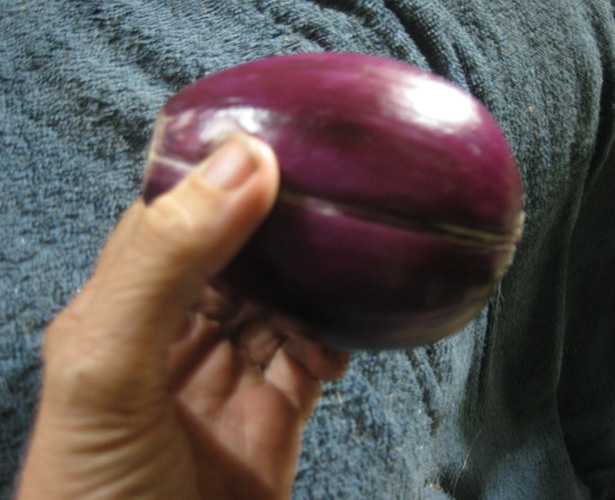 Fig. 1
Fig. 1
I have no idea if that is how it was done historically, but it looks like it is possible to use a membrane from onion on kazoos.
White Onions--
I had trouble but did manage to peel off small pieces of the thin transparent membrane and dry it between paper with weights on them. They were very fragile. While still wet it will fold over and cling to itself. It is hard to flatten out without tearing.
I tried scraping one membrane and most of the pulp off, leaving the other membrane with very little pulp on it. These were stronger and larger pieces could be obtained. I dried them between paper with weights on them. They were still pretty fragile and, even through I scraped them as thin as I possibly could, seem too stiff to vibrate properly unless maybe for a large diaphragm, but then the curvature would cause problems.
Red Onions--
I managed to obtain fairly large pieces of thin almost transparent membranes by peeling of the top membrane and the pulp (also containing the reddish color) off together, leaving a layer of membrane laying on the surface of the onion beneath. To get it off the onion I placed a layer of plastic kitchen wrap over it and transferred the skin to it as I peeled it off of the onion. Tried to smooth it out but not very successful due to the curves in the onion skin and the extreme flexibility of the plastic wrap. When partially dry I turned it over and again attempted to smooth it out with not much better results. I may try a different plastic later.
When dry it resembles one type of the dimo that I have, except very wrinkled. When re-wet most of the wrinkles can be smoothed out if very careful.
This is the process I used to obtain this material from large red onions.
Some of the pictures are a bit out of focus because I was using macro mode and holding the camera with one hand.
 Fig. 1
Fig. 1
1. Cut the top and
bottom off a large onion.
2. Make one cut through at least one layer of the onion from top to bottom (or from bottom to top, which ever comes first, or is in any case more convenient)
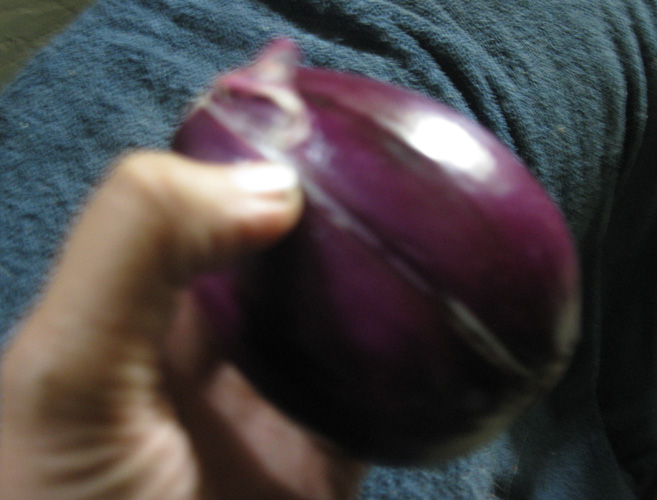
3. Try to find a place along the cut where the upper part of the layer can be pulled away leaving a thin whitish film on top of the onion underneath. Or use your thumb nail to gouge out a piece of the upper fleshy part down to the lower membrane layer near the edge. Enlarge that spot and pull away the upper part leaving the membrane laying against the onion.
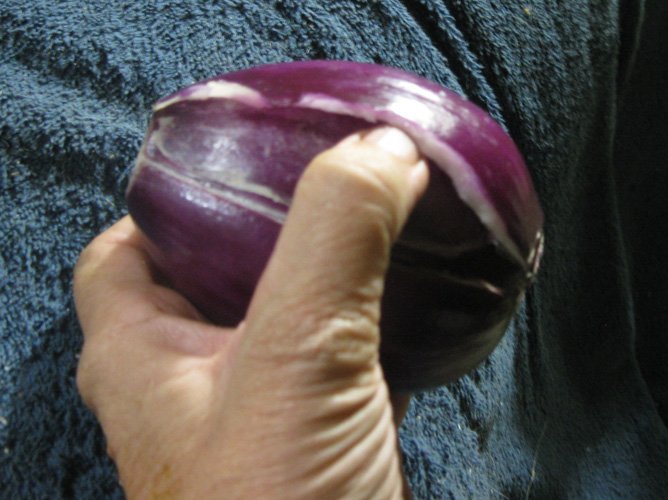

4. Continue to pull off the upper part of the onion layer. Try working your thumb or finger between them. You can take the upper part off in pieces, just try to keep the underneath membrane in one piece. If you can't just do your best. It does get easier as you learn how. Sticking the onion under water if the fumes get to your eyes will help.
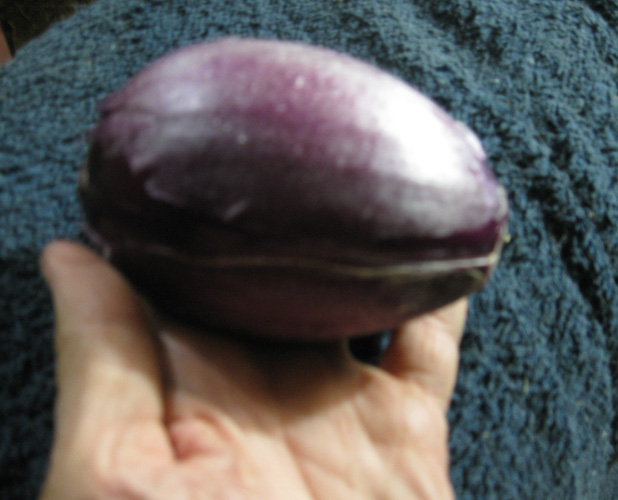
Here is the onion with the top part of the layer removed leaving just the lower membrane.
If this membrane is left on the onion it is hard to get off when dry, because it shrank onto it tighter.
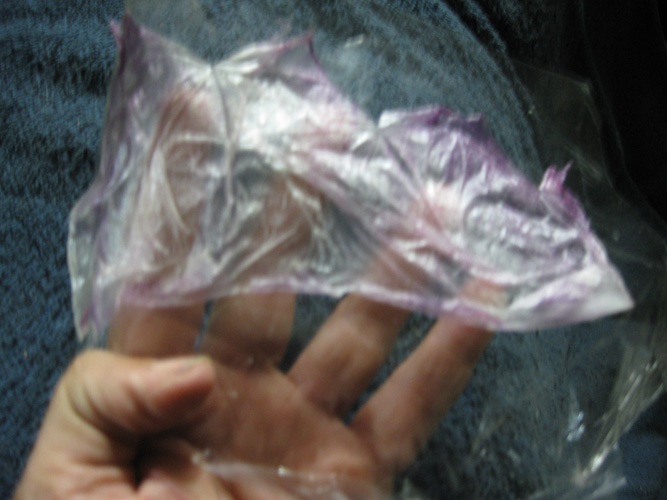
5. Once all of the membrane is exposed, place a piece of plastic wrap over it and gently tease up an edge of the membrane and pull the membrane away from the surface of the onion, pressing it against the plastic until it is all off. Try to spread it out as much as possible. You won't be able to get it smooth because of the curvature of the onion. The first couple of times I used a piece of kitchen plastic cling wrap, which was easy to wrap around the onion, but hard keep from clinging to everything. After that I got a little stiffer piece, more like cellophane, which doesn't wrap around the onion and cling as well, but was easier to control.
I couldn't take a picture of actually peeling the membrane off, because that takes two hands, leaving none to opperate the camera.
6. When it is partially dry it can be pulled away from the plastic, and turned over. Lay it on the plastic which will still be wet from the moisture from the membrane against it. Try to spread it out smoothly.
Once dry a piece of it can be re-wet with water and spread out smoothing out the wrinkles as much as possible.
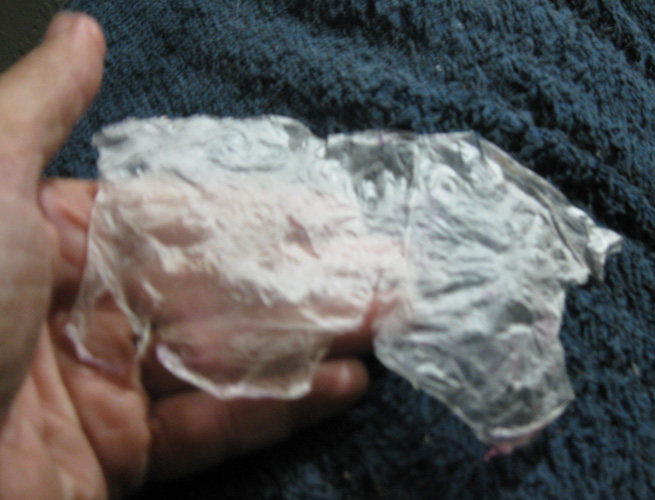
Here ia piece that has been completely dried. It looks a bit shiny in the picture, but that is just because of the lighting.
7. The process can be repeated for each layer of the onion.
2. Make one cut through at least one layer of the onion from top to bottom (or from bottom to top, which ever comes first, or is in any case more convenient)

3. Try to find a place along the cut where the upper part of the layer can be pulled away leaving a thin whitish film on top of the onion underneath. Or use your thumb nail to gouge out a piece of the upper fleshy part down to the lower membrane layer near the edge. Enlarge that spot and pull away the upper part leaving the membrane laying against the onion.


4. Continue to pull off the upper part of the onion layer. Try working your thumb or finger between them. You can take the upper part off in pieces, just try to keep the underneath membrane in one piece. If you can't just do your best. It does get easier as you learn how. Sticking the onion under water if the fumes get to your eyes will help.

Here is the onion with the top part of the layer removed leaving just the lower membrane.
If this membrane is left on the onion it is hard to get off when dry, because it shrank onto it tighter.

5. Once all of the membrane is exposed, place a piece of plastic wrap over it and gently tease up an edge of the membrane and pull the membrane away from the surface of the onion, pressing it against the plastic until it is all off. Try to spread it out as much as possible. You won't be able to get it smooth because of the curvature of the onion. The first couple of times I used a piece of kitchen plastic cling wrap, which was easy to wrap around the onion, but hard keep from clinging to everything. After that I got a little stiffer piece, more like cellophane, which doesn't wrap around the onion and cling as well, but was easier to control.
I couldn't take a picture of actually peeling the membrane off, because that takes two hands, leaving none to opperate the camera.
6. When it is partially dry it can be pulled away from the plastic, and turned over. Lay it on the plastic which will still be wet from the moisture from the membrane against it. Try to spread it out smoothly.
Once dry a piece of it can be re-wet with water and spread out smoothing out the wrinkles as much as possible.

Here ia piece that has been completely dried. It looks a bit shiny in the picture, but that is just because of the lighting.
7. The process can be repeated for each layer of the onion.
I have no idea if that is how it was done historically, but it looks like it is possible to use a membrane from onion on kazoos.